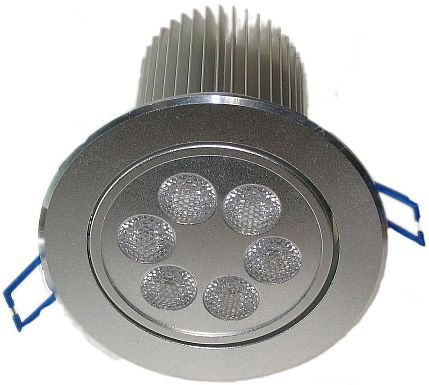Terminology
BASIC CONCEPTS OF LED LIGHTING
Overview
LED lighting saves on your power bills. How?
For the same visible light (lumens), LED lighting uses less power (Watts) defined as “luminous efficacy source” (lm/W). Incandescent lamps such as halogen dissipate a large portion of their power in light beaming up into the roof and heat. With LED lighting the light beams only downwards and heat loss is small. Example if a halogen 50W produces a downward light of 600 lumens a LED light would require 10W hence a saving of 40W that is an 80% saving on each light globe. Most rooms have on average 6 to 8 halogen lights, add them up for a major power saving.
Lux (lx) is the unit of illuminance and luminous emittance, measuring luminous flux per unit area. The power at each wavelength weighted according to the luminosity function, a standardized model of human visual brightness perception.
One lux is equal to one lumen per square metre: 1 lx = 1 lm/m2 = 1 cd·sr·m–2.
A flux of 1,000 lumens, concentrated into an area of one square metre, lights up that square metre with an illuminance of 1,000 lux. However, the same 1,000 lumens, spread out over ten square metres, produce a dimmer illuminance of only 100 lux.
One foot candle is about 10.764 lux. Since one foot-candle is the illuminance cast on a surface by a one-candela source one foot away, a lux could be thought of as a "metre-candle", although this term is discouraged because it does not conform to SI standards for unit names.
Lumen (lm) is the unit of luminous flux, a measure of the total amount of visible light emitted by a source.
Luminous flux measurements reflect the varying sensitivity of the human eye to different wavelengths of light. Measurements made by either integrated sphere method or goniophotometer method.
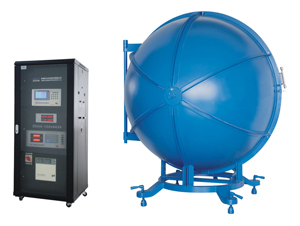 Sphere
Sphere
Radiant flux measurements indicate the total power of all light emitted, independent of the eye's ability to perceive it.
Luminous efficacy radiation (lm/W) is a measure of how well a light source produces visible light.
It is the ratio of luminous flux to power of the radiant flux from the source's output.
Luminous efficacy source (lm/W) is a measure of how well a light source produces visible light.
It is the ratio of luminous flux to total electric power consumed by the source.
Luminous intensity distribution is a measure of where the light source directs its light represented in a polar graph or tabular format.
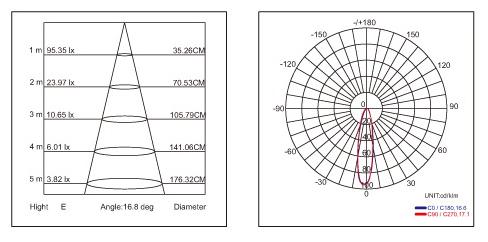
Beam angle is measured with the lamp pointed downwards its vertical angle of 0° describes the centre of a directional lamp’s beam. The beam angle is defined as two times the vertical angle at which the intensity is 50% of the maximum.
Colour temperature is measured in Kelvin (K) of how warm or cool the light emitted by a lamp appears. The lower the colour temperature value in Kelvin, the warmer the colour and higher values refer to cooler colours. Warm colours appear tinged with yellow and generally feel soft and cosy. Cool colours are tinged with blue and appear whiter; making them a more suitable for working environments than relaxing.
|
Colour Temperature |
Classification |
Application |
|
2700K |
Very Warm White |
Colour for average household use, similar to standard indoor incandescent bulbs. |
|
3000K |
Warm White |
Average colour of halogen lamps. Slightly whiter than incandescent. Often used in white rooms for a clean and modern feel. |
|
3500K |
White |
Average colour of fluorescent tubes and CFL lamps. |
|
4000K |
Cool White |
usage in areas where clear illumination is paramount such as kitchens and offices. |
|
5400K |
Daylight |
The lower end of the ‘daylight’ colour temperatures. Representative of natural light on a bright, sunny day. Very cold and generally not used within the households. |
|
6000K |
Cool Daylight |
Upper end of the daylight colour temperatures. Very white light, approx. colour of daylight simulating fluorescent tubes and CFL lamps. |
|
6500K |
Cold Daylight |
Slightly harsh blue/white light used in specialist applications such as photography and architectural drawing. |
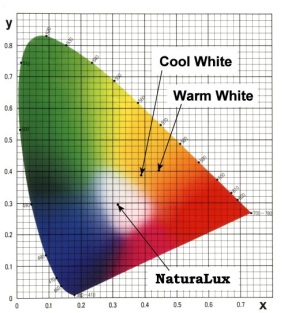
Colour Rendering Index (CRI) is a measure of how well light sources render the colours of objects, materials, and skin tones.
CRI is calculated by measuring the difference between the lamp in question and a reference lamp in terms of how they render to eight colour samples. The average differences measured are subtracted from 100 to derive the CRI. Smaller average differences will result in a higher number, while larger differences give a lower number.
A CRI < 70 is poor, > 70 & < 80 is good, >80 is excellent. The CRI should not be viewed without reference to the lumens as a higher CRI reduces the lumens value. A high CRI with high lumens should be sought.
 CIE Test Colours
CIE Test Colours
Heat Sink black anodised aluminium better radiates heat as it has a higher emissivity coefficient to silver aluminium that is anodised or not.
The result is smaller heat sink for dissipating the same power.
The formula:
Radiative heat transfer by electromagnetic radiation is proportional to
e*(T1^4 - T2^4)
where:
T1 is the absolute temperature of the material
T2 is the absolute temperature of the surroundings.
e is the emissivity coefficient.
LED Driver is an electronic device used to convert AC high power mains to DC low current and voltage to drive the LED light unit and is either integrated or external to the LED light unit.
The most common LED Drivers output is Constant Current DC and less common are Constant Voltage DC and Constant Voltage high frequency AC, the latter usually used for Halogen lights.
Drivers are designed as dimmable or not dimmable. Dimmable drivers are designed to support dimmers that have either leading or trailing or leading and trailing technology the latter is the most versatile to accommodate greater variety of dimmers. Ilumn drivers support all of these types of dimmers.
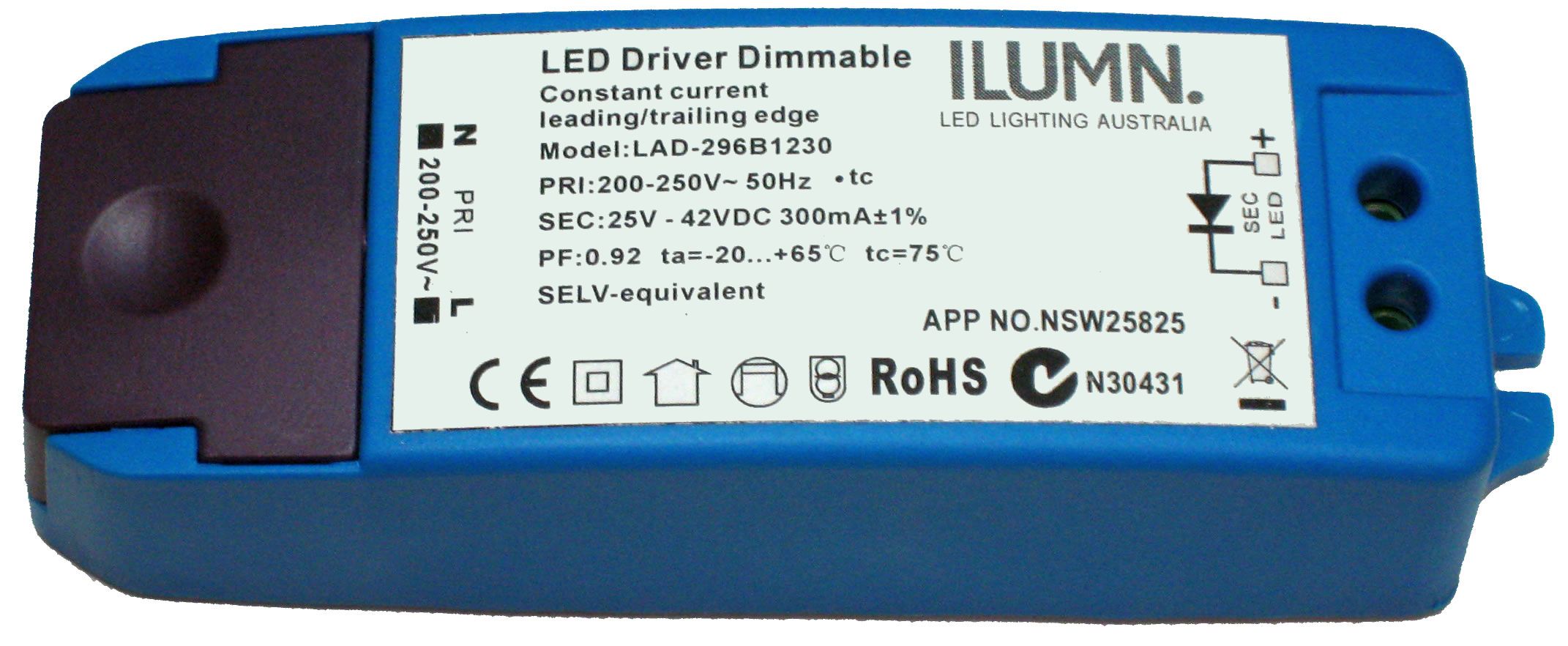
Power Factor (PF) in a AC system is defined as the ratio of the real power (Wattage) divided by the apparent power (VA) and is defined as a number between 0 and 1 the latter being no loss.
The VA is measured with multimeter as the input AC Voltage and AC Current
Example : A Driver draws 5Watts (Real Power) from the AC Mains but it has a power factor of 0.8 then the Driver’s Apparent Power (VA) is 5/ 0.8 = 6.25VA.
Power Bills
Residential power uses are currently billed at the lesser value of real power (Watts) while some commercial users are billed at the apparent power (VA) rates.
Formulas for AC devices
Apparent Power = VA = V x I
Real Power = W = VA x PF
Watts = V x I x Cos(Ø) (where Ø = phase angle between the Voltage and Current).
1 Watt = 1 joule /1 second (joule is measured in KW hours)
COB – Chip on board is where the LEDs are consolidated into a single module as opposed to individual LEDs.
COB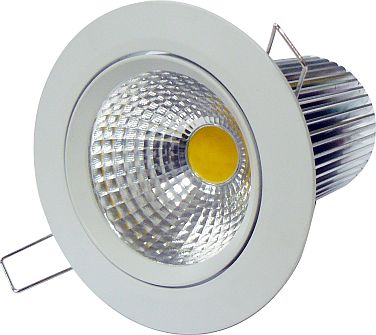 INDIVIDUAL
INDIVIDUAL